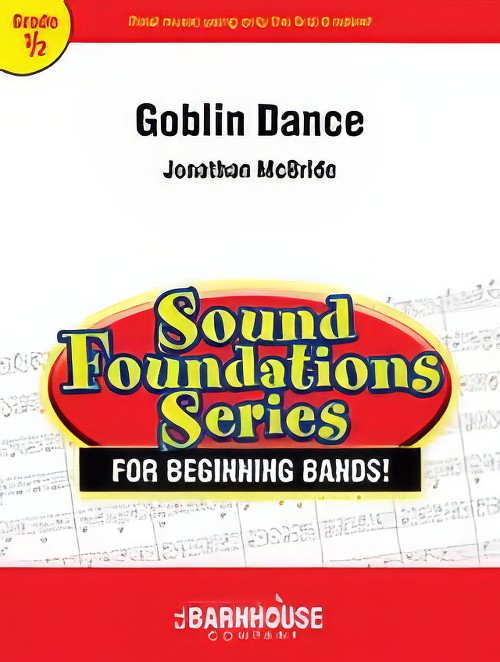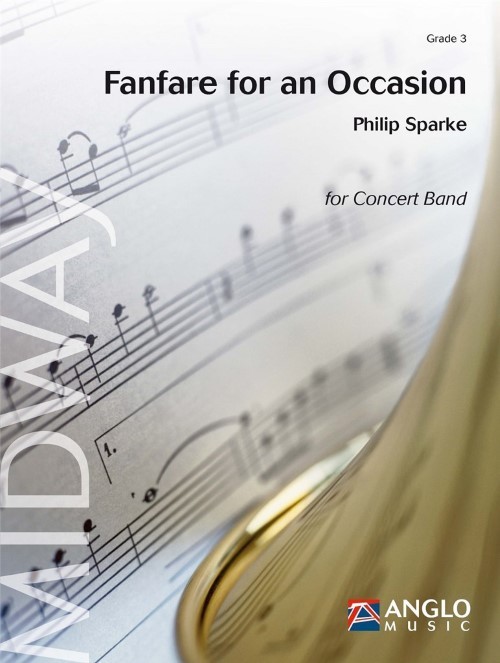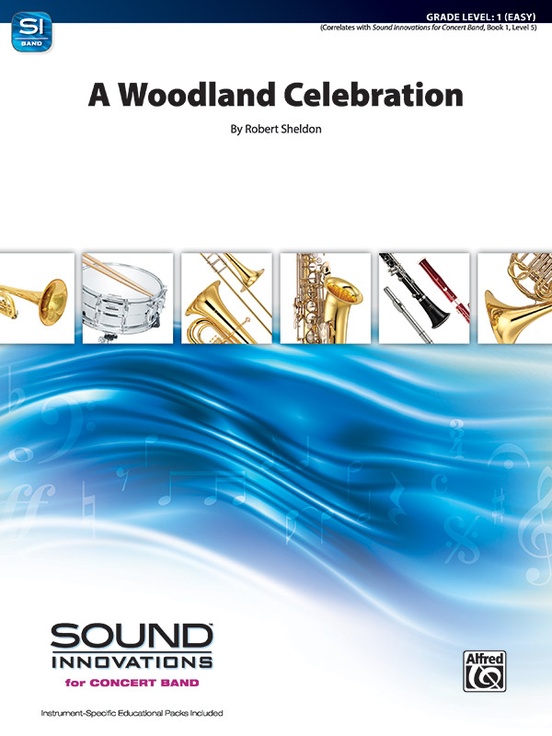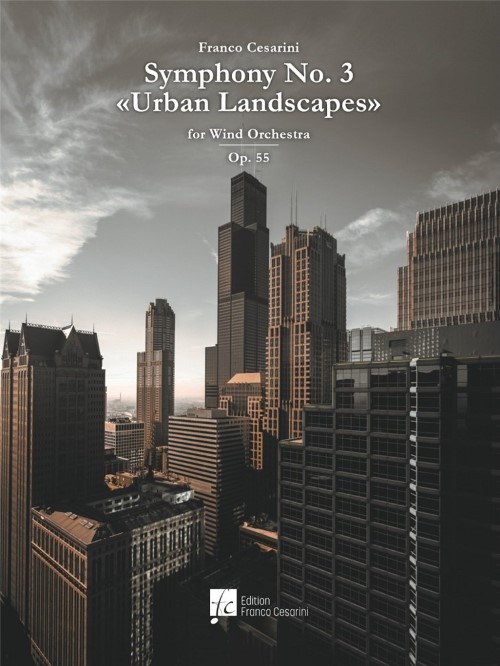Results
-
 £129.99
£129.99 -
£237.99
Second Symphony, Op. 44 - James Barnes
Estimated dispatch 7-14 working days
-
 £72.99
£72.99Yorkshire Ballad for Concert Band(Second Edition) - James Barnes
Estimated dispatch 7-14 working days
-
 £274.99
£274.99Symphony No. 2: States Of Mind, Opus 87 - Teo Aparicio-Barberán
I- Logos (reason)II- Pathos (emotion)III- Ethos (credibility)The ancient Greeks believed that music shaped the character of man. In Egyptian temples, music was an essential part of the magical rites to alter the course of nature or to treat illness.And today we know that sound can actually alter matter. The secret of music lies in harmony and mathematics, as many great musicians and experts have always known.One of the most important qualities of music is that it enables the listener to focushis attention inwards instead of on what is around him. It is indisputable that music can inspire emotion. Music leads us into a universe of emotions that are difficult to put into words. In short, music reaches into corners of our soul and thoughtsthat words cannot reach and makes it possible to more clearly describe these different States of mind.The composer of this symphony also believes that each "musical argument" must be constructed so that it will induce the desired reaction in thelistener.Music: more than wordsIn recent times, most orchestral symphonies have been based on a story, a text or something similar so that their composition must be structured accordingly.The intention of this work by Teo Aparicio-Barbern is quitedifferent. The composer describes the three elements of the argument as the only formal structure of the work. Since certain philosophers in world history were able to subdivide grammatical argument, why shouldnt that also be possible for the musicalargument?Since ancient times the power of the spoken word has captivated mankind. How can an argument move people and mobilise the masses? Where does the power of words come from today? The answer lays not so much in what people say but in how theysay it.Rhetoric is one of the oldest humanist disciplines in Western civilisation. Aristotle, in the 4th century BC, called it the art of persuasion. Indeed, the terms rhetoric and persuasion are mutually interchangeable.More than 2000 years agoAristotle structured his rhetoric according to the following three elements: the logos, the pathos and the ethos.Logos (words, reason) is the reasoning that gives freedom to the structure of the text by expressing what one wishes to say usingspecialist terms. With logos we create arguments to receive public approval and to defend our ideas.Pathos, the second element, refers to the effective use of public psychology. Pathos can be considered as the capacity to induce the desired emotionalresponse in the public, by creating an emotional connection with the public so that they accept our message.The third element, ethos (credibility), refers to the character of the speaker and is perhaps the most important of the three elements.Aristotle based his concept of ethos upon his belief that truth and justice will always have the upper hand over anger. He believed that what was true and good was easier to prove and was more persuasive.This second orchestral symphony from thecomposer from Enguera follows these three parameters of the argument according to Aristotle. Each movement tries to summon a different state of mind in the listener so that the message itself can be better understood and appreciated. Apart from thesethree general concepts the music is only structured, as Claude Debussy would say, in a "formative way".The first movement, logos, is based on a scherzo melody that undergoes various changes in rhythm and harmony. The arguments are presented by meansof conventional techniques of composition. The second movement, pathos, is characterised by suggestions of sound. It is subdivided into two large parts. The first part is based on a five seven sequence with five sounds that are repeated in differentenvironments, structures and dynamics. The second part, which is largely tonal, brings out more directly the emotional overtones that each argument must have. The third movement, ethos, is a faithful rendition of the composers personality. In thislast part, clear rhythmic sequences stand out, there are large dynamic contrasts and lots of tone variation. In addition, and this is quite in keeping with the composers earlier work, the harmony in States of Mind is handled in a manner that is bothoriginal and efficient, as a result of which Aparicio-Barberns message is well understood by the listener.This second symphony by Teo Aparicio-Barbern is devoted to "my dear Henrie Adams, a guiding light in this eternally dark musical world. Thankyou for everything."
Estimated dispatch 7-14 working days
-
 £189.95
£189.95TUBA CONCERTO (Gregson) (Tuba/Concert Band) - Gregson, Edward
Score & Parts. The concerto is in three movements, following the usual quick-slow-quick pattern: Allegro deciso, Lento e mesto, Allegro giocoso. The first has a sonata form shell with two contrasting themes, the first rhythmic in character, the second lyrical. There is a reference made in the development section to the opening theme of Vaughan Williams's tuba concerto, but this merges into the other material in the development section. The second movement unfolds a long cantabile melody for the soloist, which contrasts to a ritornello idea. The central climax of the movement triumphantly heralds the main theme from the band. The last movement is in rondo form, alternating the main theme with two episodes. The first of these is a broad sweeping tune, the second is jazz-like in style. After a short cadenza, reference is made to the opening of the concerto, and the work ends with a triumphal flourish. Duration: 18 mins. American Grade 4.5
Estimated dispatch 7-14 working days
-
 £32.95
£32.95TUBA CONCERTO (Gregson) (Tuba/Concert Band) Extra Score - Gregson, Edward
Extra Score only. The concerto is in three movements, following the usual quick-slow-quick pattern: Allegro deciso, Lento e mesto, Allegro giocoso. The first has a sonata form shell with two contrasting themes, the first rhythmic in character, the second lyrical. There is a reference made in the development section to the opening theme of Vaughan Williams's tuba concerto, but this merges into the other material in the development section. The second movement unfolds a long cantabile melody for the soloist, which contrasts to a ritornello idea. The central climax of the movement triumphantly heralds the main theme from the band. The last movement is in rondo form, alternating the main theme with two episodes. The first of these is a broad sweeping tune, the second is jazz-like in style. After a short cadenza, reference is made to the opening of the concerto, and the work ends with a triumphal flourish. Duration: 18 mins.
Estimated dispatch 7-14 working days
-
 £50.00
£50.00Goblin Dance (Concert Band - Score and Parts) - McBride, Jonathan
Goblin Dance for beginning band uses only the first six notes learned in band instruction, and is an ideal bridge from method book exercises to concert music! Unison themes are introduced so each member of the band gets to play the melody, before dividing into melody and harmony provided by the low brass and woodwinds. A second theme is introduced in unison, followed by the Goblin Dance finale when all three parts: melody, harmony, and second theme join together for an exciting and mature-sounding finish. You and your bands will enjoy working on this catchy and rhythmic beginning band piece that your audiences will love. Spooky fun! Duration: 1.30
Estimated dispatch 7-14 working days
-
 £72.99
£72.99Fanfare for an Occasion (Concert Band - Score and Parts) - Sparke, Philip
Fanfare for an Occasion was written to celebrate the 20th anniversary of the founding of Anglo Music Press, the publishing company dedicated to the works of British composer, Philip Sparke. It is a bright and festive work in which the main theme starts on the tenor instruments of the band before appearing as canonical imitation by all sections in turn. A short, repeated bridge passage leads to a second theme on the saxes that is taken up by the full band and leads back to a return of the main theme and a repeat of the second subject, which brings the fanfare to a brilliant close. Duration: 2.00
Estimated dispatch 7-14 working days
-
 £52.95
£52.95A Woodland Celebration (Concert Band - Score and Parts) - Sheldon, Robert
Perfect for opening or closing a concert for first-year band students, A Woodland Celebration by Robert Sheldon lends a light rhythmic style to a tuneful melody. As soon as young students can play a concert B-flat scale and learn the note concert A-flat, this piece is easily playable. Second clarinet does not go over the break, and second trumpet and horn have limited ranges as well. Duration: 1.45
Estimated dispatch 7-14 working days
-
 £399.00
£399.00Symphony No.3 (Urban Landscapes) (Concert Band - Score and Parts) - Cesarini, Franco
Fascinated by the beauty of Chicago, Franco Cesarini has translated his emotions into music: this is how Symphony No. 3 "Urban Landscapes" Op. 55, was born, a musical portrait of this metropolis overlooking Lake Michigan. The composition is divided into three movements: The Wrigley Building from Dawn to Noon, Blue Silhouette and Cloud Gates, which by sharing the same thematic material arranged in cyclical form, strengthen the overall cohesion of the piece. The first movement, preceded by a short slow introduction in which the main theme is presented in an almost dreamlike form, metaphorically represents the city at dawn. The sudden change of time symbolizes the start of activities with all its noises and sounds: you can hear the bell that announces the closing of the subway doors, the sound of cars speeding by, the siren of a patrol car. If the first movement represents the day, the second introduces a nocturnal environment: a melancholic melody played by the English horn anticipates a more animated tempo depicting melodies coming from jazz clubs. Powerful fanfares that take up the second theme of the first movement introduce the third movement. In this finale, the role of the two themes is reversed compared to the first movement and one takes the place of the other in a kind of games of mirrors. Symphony No. 3 "Urban Landscapes" Op. 55: a sumptuous musical portrait of the "Windy City". Duration: 27.00
Estimated dispatch 7-14 working days
